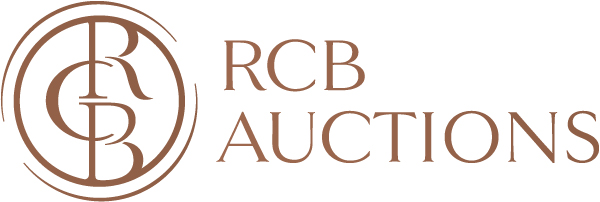Eight Horses, The Art of Animal Symbolism in Chinese Porcelain
In addition to the unique colors, Chinese blue and white porcelain was also known for remarkable decorative motifs as a way of imparting important lessons about life and philosophy as well as conveying ethical messages. Many animal motifs were used to transmit the messages. Among the most common animals seen in Chinese porcelains are the dragon, the phoenix or the fu dog. Featured in this timed auction are collections of blue and white porcelains decorated with the eight horses.
Click here for Thai

The eight horses motif has a name of its own called Bā Jùn Tú (八骏图) which can be loosely translated as a picture of 8 steeds. It became a popular theme for porcelain decorations from the Transitional into the Yongzheng period (1723- 1735). The motif originates from the Tale of King Mu (周王傳) which describes the journeys of Zhōu Mù Wáng (周穆王), the fifth emperor of the Zhou dynasty (1046 -256 BC) who is reputed for bringing great changes to the country and reigning nearly 55 years. The tale is about King Mu who dreamed of being immortal. He was determined to travel to Kūnlún (崑崙) to taste the Peaches of Immortality in which he met Xīwángmǔ (西王母) or the Queen Mother of the West, the owner of the Garden of Immortal Peaches at the Jade Pound. During the journey, a brave charioteer named Zào Fù (造父) used his chariot to carry the king to his destination. The chariot was pulled by eight horses named after the colors of their hair.
These 8 horses were believed to represent the value and virtues of what the revered King should embody. Each horse also conveys its auspicious meaning and symbolism. Here are the names and the symbols of the 8 steeds.
· Hua Liu (骅骝), a red horse with a black mane, is associated with successful businesses.
· Lu Er (騄耳), a yellow-green horse, is linked to noble ranks.
· Chi Ji (赤骥), a red horse, is related to wealth.
· Bai Xi (白羲), a pure white horse, represents longevity and love.
· Qu Huang (渠黄), a yellow horse, is the epitome of wisdom.
· Yu Lun (逾轮) is a lilac color horse which is capable of running a thousand Chinese Li.
· Dao Li (盗骊) is a pure black horse that can take advantage of any situation.
· Shan Zi (山子), an off-white horse symbolizes happiness and harmony.
The meaningful messages together with the tale propelled the eight horses to become a popular subject among later poets and artists and a symbol for the vehicle of journeys of any emperor.
Lot 516: A pair of blue and white porcelain saucer, each painted to interior and exterior with eight horses within border of plum blossom on a blue ground
Style: Chinese
Circa: 19th century
Lot 610: Three blue and white porcelain teacups painted with eight horses pattern
Style: Chinese
Circa: 19th century
Lot 613: A blue and white porcelain teapot tray painted with eight horses
Style: Chinese
Circa: 19th century
Lot 659: A pair of blue and white porcelain covered bowls painted with eight horses on a background
Style: Chinese
Circa: 19th century
Lot 661: A group of blue and white porcelain vessels comprising tea cups, saucer and lids each painted with eight horses
Style: Chinese
Circa: 19th century
Browse and bid other items for Timed Auction until 1 October, 2022 on here.

